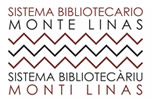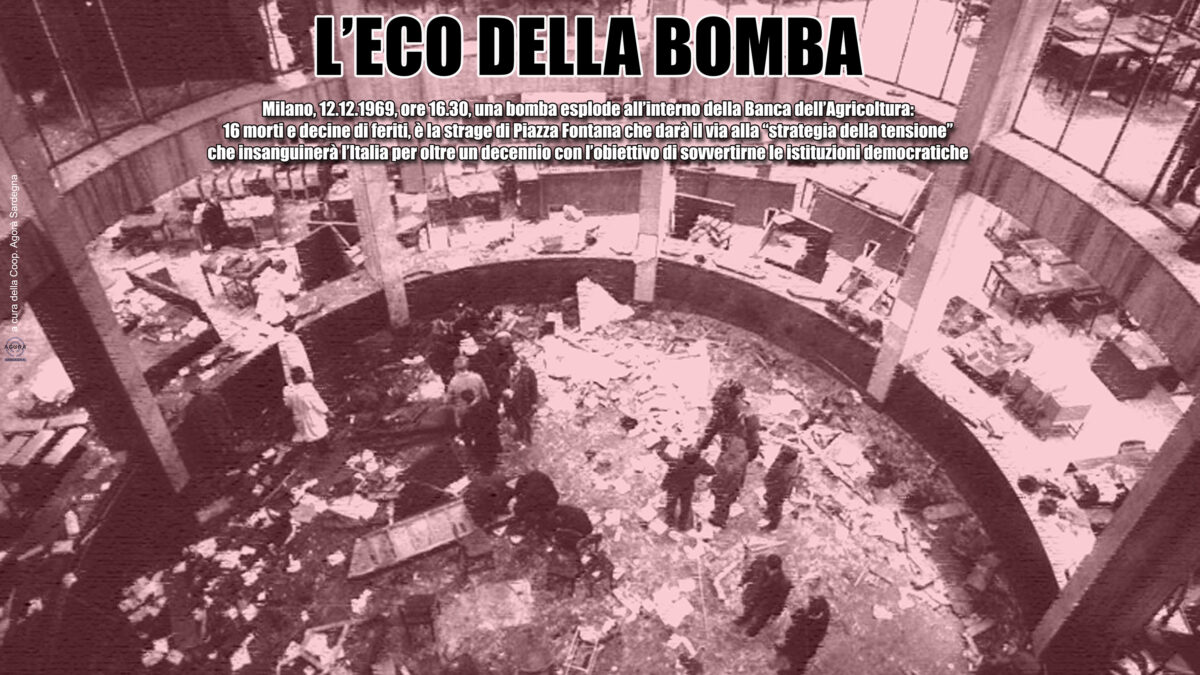L’ECO DELLA BOMBA
Milano, 12.12.1969, ore 16,30, una bomba esplode all’interno della Banca Dell’Agricoltura: 16 morti e 89 feriti. E’ la strage di Piazza Fontana che dà il via alla strategia della tensione che insanguinerà l’Italia per un decennio con l’obiettivo di sovvertirne le istituzioni democratiche.
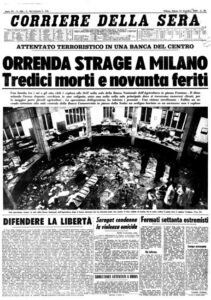
“Nonostante il passaggio inesorabile del tempo costituisce un nostro preciso imperativo morale mantenere vivo il ricordo di quel giorno, non solo per rendere omaggio a persone innocenti, che per mano di una violenza cieca e insensata, sono state strappate alla vita e agli affetti, ma, soprattutto, per alimentare la memoria della nostra storia contro la cultura delle dimenticanza”.
Piero Grasso
Bibliografia:
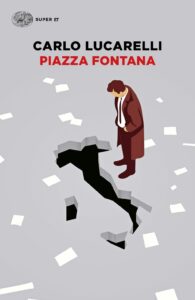 1 – Piazza Fontana / Carlo Lucarelli ; con un’appendice a cura di Nicola Biondo. – Torino : Einaudi, 2019. –
1 – Piazza Fontana / Carlo Lucarelli ; con un’appendice a cura di Nicola Biondo. – Torino : Einaudi, 2019. –
Milano, 12 dicembre 1969. Una bomba esplode nella sede della Banca Nazionale Dell’Agricoltura, in piazza Fontana. È una strage. È l’inizio della strategia della tensione che con il sangue e la violenza tenta la via del colpo di Stato autoritario. Lucarelli ricostruisce questo «romanzo nero della Storia d’Italia», guidandoci in un percorso disseminato di bugie, capri espiatori, coperture e depistaggi. Un libro che ci toglie il sonno, perché è tutto vero. In appendice, a cura di Nicola Biondo, la cronologia degli avvenimenti, la sintesi delle fasi processuali, le biografie dei protagonisti, la bibliografia e filmografia essenziali.
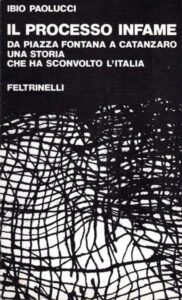 2 – Il processo infame : una storia che ha sconvolto l’Italia / Ibio Paolucci. – Milano : Feltrinelli, c1977.
2 – Il processo infame : una storia che ha sconvolto l’Italia / Ibio Paolucci. – Milano : Feltrinelli, c1977.
La storia di un processo che ha marcato la vita nazionale degli ultimi sette anni viene qui riproposta nella forma di un agile pamphlet. Generali, ammiragli, alti funzionari dello Stato, ministri dei governi sono i protagonisti di quella “strategia della tensione” che ha seriamente minacciato le sorti della democrazia nel nostro Paese.
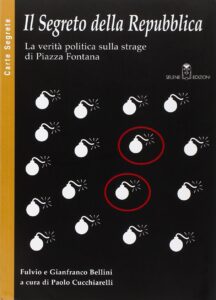 3 – Il Segreto della Repubblica : la verità politica sulla strage di Piazza Fontana / Fulvio e Gianfranco Bellini ; a cura di Paolo Cucciarelli. – Milano : Selene Edizioni, 2005.
3 – Il Segreto della Repubblica : la verità politica sulla strage di Piazza Fontana / Fulvio e Gianfranco Bellini ; a cura di Paolo Cucciarelli. – Milano : Selene Edizioni, 2005.
A due mesi dalla sentenza della Corte di Cassazione che ha definitivamente fatto calare il sipario sulla vicenda giudiziaria di piazza Fontana, ritorna in libreria una testimonianza di quegli anni tormentati per il Paese. «Il Segreto della Repubblica – La verità politica sulla strage di piazza Fontana» è apparso la prima volta nel 1978: troppo a ridosso del rapimento e dell’uccisione di Aldo Moro, e per questo motivo la casa editrice Feltrinelli, che in un primo momento aveva deciso di pubblicare il libro si era poi fatta da parte, e agli autori Fulvio e Gianfranco Bellini non era rimasto altro da fare che far uscire il testo con una piccola casa editrice, la Flan, con uno pseudonimo, mentre Feltrinelli ne assicurò comunque la distribuzione. Il libro vendette cinquemila copie, ma non raggiunse la notorietà. Viene riproposto oggi con i nomi degli autori e la prefazione del giornalista Paolo Cucchiarelli da Selene Edizioni. Lo scenario delineato dai due Bellini è inquietante: un patto tra il presidente della Repubblica Giuseppe Saragat e Aldo Moro, all’epoca ministro degli Esteri, a pochi giorni dallo scoppio delle bombe a Milano e Roma nel dicembre 1969. La fonte che svela a Fulvio Bellini il «segreto della repubblica» è G.A., agente dell’intelligence inglese, conosciuto ai tempi della lotta partigiana. Negli ultimi giorni del marzo 1969 G.A racconta all’amico italiano quello che viene definito il «piano Saragat». L’agente racconta della visita del presidente americano Nixon e di Kissinger a Roma ai quali il capo dello Stato esprime allarmato le sue paure: la deriva a sinistra del Paese e delinea con loro quello che i Bellini ribattezzano «il piano Saragat»: lo scioglimento del PSU, la caduta del governo di centrosinistra e lo scioglimento delle camere. Bellini racconta come, al successivo incontro nel settembre 1969 con l’amico inglese, mancava solo l’ultima delle condizioni. Ma nel frattempo erano scoppiate le bombe di aprile in Fiera a Milano. G.A. si dice sempre più preoccupato di un’involuzione, e predice nuovi attentati. Il 12 dicembre la strage: 16 morti, un paese attonito e ammutolito. La manifestazione organizzata nei giorni seguenti dal sindacato in piazza duomo a Milano, e le pressioni che arrivano dall’Inghilterra ( Observer denuncia con due articoli lo stato d’allerta in Italia e accusa Saragat addirittura di essere il mandante politico della strage) convincono Saragat a rinunciare al piano liberticida.
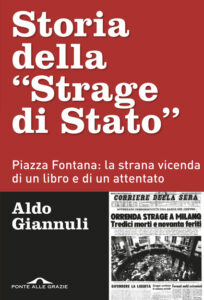 4 – Storia della “Strage di Stato” : Piazza Fontana: la strana vicenda di un libro e di un attentato / Aldo Giannuli. – Milano : Adriano Salani, 2019.
4 – Storia della “Strage di Stato” : Piazza Fontana: la strana vicenda di un libro e di un attentato / Aldo Giannuli. – Milano : Adriano Salani, 2019.
Può un libro cambiare la storia giudiziaria e politica di un Paese? Può un’inchiesta (una «controinchiesta») giornalistica, condotta da un anonimo gruppo di militanti e pubblicata da un minuscolo editore «eretico», modificare la percezione collettiva di vicende rilevantissime per lo Stato? Anzi, la percezione collettiva dello Stato stesso? Talvolta accade. E in Italia il caso senza alcun dubbio più significativo è quello de “La strage di Stato”, libro uscito nel 1970 che per primo indagò sulla strage di piazza Fontana e sul coinvolgimento dei movimenti di estrema destra e delle istituzioni, che finì per vendere centinaia di migliaia di copie. Oggi, a cinquant’anni dalla strage, Aldo Giannuli riprende in mano quel libro e ci offre una «inchiesta sull’inchiesta», con tutta la passione e la competenza del ricercatore che proprio allora iniziò a investigare nei meandri più oscuri della nostra Repubblica. Con la consueta acribia, Giannuli esamina “La strage di Stato”, con le sue rivelazioni e i suoi errori, e ci reimmerge in una storia molto meno lontana di quel che potrebbe sembrare, ripercorrendo vicende, «verità» processuali emerse nei decenni, altre verità meno appariscenti, misteri che ancora aspettano di essere sciolti. E che forse potranno esserlo, anche grazie a libri come questo.
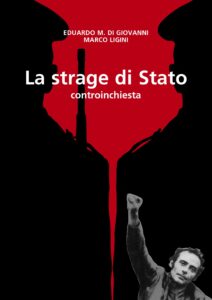 5 – La strage di stato : controinchiesta / Eduardo M. Di Giovanni , Marco Ligini , Edgardo Pellegrini ; con una postfazione di Guido Salvini. – Roma : Odradek, 2006.
5 – La strage di stato : controinchiesta / Eduardo M. Di Giovanni , Marco Ligini , Edgardo Pellegrini ; con una postfazione di Guido Salvini. – Roma : Odradek, 2006.
Leggere La strage di Stato serve a capire l’oggi, da dove viene questo paese, da quali storie sorge il presente, di quali infamie sia capace il potere pur di conservarsi. Un libro, ma soprattutto un metodo. Consigliato ai giovani, ove volessero iniziare a pensare con la propria testa, e a quelli che non lo sono più perché misurino la strada percorsa. Un libro, dunque, non per “ricordare”, perché il metodo di cui si tratta non è l’esercizio della “memoria” – costa moltissimo coltivarla e dura sempre troppo poco – ma un modo di guardare il presente. Una diffidenza vigile, una convinzione non contingente delle proprie ragioni, un interrogarsi costante. Guardare con gli occhi bene aperti, non credere alle favole dei media, imparare a distinguere sempre (tra il compagno ingenuamente estremista e l’agente provocatore infiltrato, per esempio!). Perché l’antagonismo ha bisogno di intelligenza, soprattutto. Di “rabbia” è fin troppo pieno questo schifo di mondo.
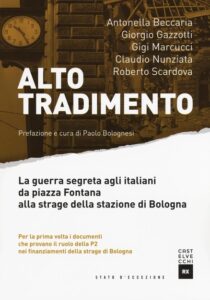 6 – Alto tradimento : la guerra segreta agli italiani da Piazza Fontana alla strage della stazione di Bologna / Antonella Beccaria … [et al.] ; prefazione e cura di Paolo Bolognesi. – Roma : Castelvecchi, 2016.
6 – Alto tradimento : la guerra segreta agli italiani da Piazza Fontana alla strage della stazione di Bologna / Antonella Beccaria … [et al.] ; prefazione e cura di Paolo Bolognesi. – Roma : Castelvecchi, 2016.
“Licio Gelli non fu solo il depistatore delle indagini sulla strage di Bologna del 2 agosto 1980, ma anche il collettore di 13.970.000 dollari annotati in un documento intestato ‘Bologna’. Quel finanziamento fu poi completato tramite operazioni eseguite su banche facenti capo a Umberto Ortolani e Roberto Calvi, che attribuì ai servizi segreti proprio un finanziamento di 15 milioni assicurato dal Pentagono che avrebbe fatto esplodere il mondo. Una leggerezza che determinò la sua condanna a morte. Le ammissioni recenti fatte dal capo della P2 sul suo coinvolgimento in un progetto eversivo realizzato dopo la strage del 2 agosto sono oggi inevitabilmente destinate a rappresentare una chiave di lettura anche della destinazione di quel finanziamento. Questo libro offre una rilettura documentata di come in Italia, fra gli anni Settanta e Ottanta, strutture clandestine, sollecitate da ambienti istituzionali e realtà internazionali, abbiano attuato uno spregiudicato attacco alla democrazia basato sulla ‘guerra non ortodossa.”
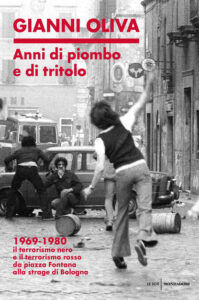 7 – Anni di piombo e di tritolo : 1969-1980: il terrorismo nero e il terrorismo rosso da piazza Fontana alla strage di Bologna / Gianni Oliva. – Milano : Mondadori, 2019.
7 – Anni di piombo e di tritolo : 1969-1980: il terrorismo nero e il terrorismo rosso da piazza Fontana alla strage di Bologna / Gianni Oliva. – Milano : Mondadori, 2019.
«Se ci ricordiamo i nomi dei carnefici e si dimenticano quelli delle vittime, vi è un corto circuito nella memoria collettiva: così si rischia di ribaltare i ruoli, di dimenticare ciò che è realmente accaduto. E la storia perde il suo senso». Dal 12 dicembre 1969, quando esplode la filiale della Banca Nazionale dell’Agricoltura di piazza Fontana a Milano, fino all’assassinio di Roberto Ruffilli da parte delle Brigate Rosse il 16 aprile 1988, in Italia sono state ammazzate quasi quattrocento persone, e oltre mille ferite e rese invalide. Sono gli anni di «piombo e di tritolo», la stagione degli attentati a mano armata del terrorismo «rosso» – che uccide magistrati come Emilio Alessandrini, operai come Guido Rossa, giornalisti come Carlo Casalegno e Walter Tobagi, che sequestra e condanna a morte il presidente della Dc Aldo Moro – e delle stragi «nere», con gli ordigni esplosivi di piazza della Loggia, del treno Italicus e della stazione di Bologna. Quale intreccio si stabilisce tra questi due fenomeni di segno ideologico opposto? Come si inseriscono le violenze nella storia dell’Italia sospesa tra modernizzazione e democrazia bloccata? In un racconto articolato e drammatico, Gianni Oliva ripercorre i fatti di quegli anni. E ricostruisce l’Italia dei due decenni precedenti, un paese a due velocità, stretto tra le aperture della Costituzione e le rigidità del Codice Rocco.
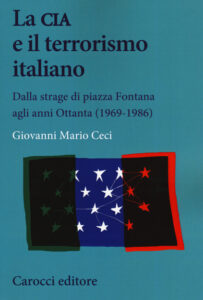 8 – La CIA e il terrorismo italiano : dalla strage di piazza Fontana agli anni Ottanta (1969-1986) / Giovanni Mario Ceci. – Roma : Carocci, 2019.
8 – La CIA e il terrorismo italiano : dalla strage di piazza Fontana agli anni Ottanta (1969-1986) / Giovanni Mario Ceci. – Roma : Carocci, 2019.
Quali furono le valutazioni degli Stati Uniti in merito alla drammatica stagione di terrorismo che l’Italia visse dalla fine degli anni Sessanta fino alla metà degli anni Ottanta? Quali le reazioni della CIA, dell’ambasciata americana a Roma, del Dipartimento di Stato, della Casa Bianca in merito alle bombe di piazza Fontana, alla strategia della tensione e ai tentativi di colpo di Stato? Quando a Langley, a Washington e a via Veneto iniziarono ad analizzare il terrorismo di sinistra e quali furono i giudizi elaborati circa le possibili conseguenze sul sistema politico italiano? Che atteggiamento ebbero di fronte al sequestro e all’omicidio di Aldo Moro? Le Brigate rosse e le altre organizzazioni terroristiche di sinistra vennero considerate il tassello fondamentale di una trama internazionale del terrore diretta dall’Unione Sovietica o un fenomeno domestico e non eterodiretto? Come furono valutate la risposta dello Stato italiano alle strategie eversive e l’evoluzione dei gruppi terroristici dalla fine degli anni Settanta fino al loro irreversibile declino? Sulla base di una vasta documentazione, il volume intende fornire alcune possibili risposte a tali domande, ricostruendo il punto di vista, le analisi, le valutazioni della CIA e degli altri attori politico-diplomatici statunitensi in merito ai terrorismi e alle trame eversive in Italia dalla fine degli anni Sessanta fino agli ultimi report elaborati a Washington nel 1986.
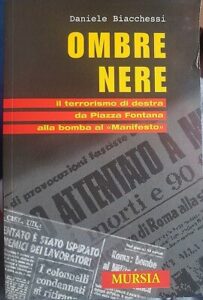 9 – Ombre nere : il terrorismo di destra da piazza Fontana alla bomba al <<Manifesto>> / Daniele Biacchessi. – Milano : Mursia, c2002.
9 – Ombre nere : il terrorismo di destra da piazza Fontana alla bomba al <<Manifesto>> / Daniele Biacchessi. – Milano : Mursia, c2002.
Nel volume, Daniele Biacchessi affronta il tema del terrorismo di destra dal 1969 ad oggi, rendendo attuali molte delle inchieste del passato. Narrato come fosse un romanzo, il libro offre al lettore quattro storie che si rivolgono, per scelta, alle nuove generazioni. “Processo alla storia”, è il capitolo dedicato al dibattimento sulla strage di Piazza Fontana terminato il 30 giugno 2001 con la condanna di alcuni esponenti di Ordine Nuovo. Nel volume viene ricostruita l’intera istruttoria, confrontati i documenti e gli atti giudiziari, sbobinate le audizioni testimoniali. Fino alle più recenti motivazioni della sentenza depositate dai giudici. Vi sono centinaia di schede dei personaggi più importanti legati all’eversione di destra.
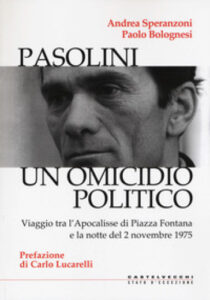 10 – Pasolini. Un omicidio politico : Viaggio tra l’Apocalisse di Piazza Fontana e la notte del 2 novembre 1975 / Andrea Speranzoni ; Paolo Bolognesi ; prefazione di Carlo Lucarelli. – Roma : Oblòcastelvecchi, 2019.
10 – Pasolini. Un omicidio politico : Viaggio tra l’Apocalisse di Piazza Fontana e la notte del 2 novembre 1975 / Andrea Speranzoni ; Paolo Bolognesi ; prefazione di Carlo Lucarelli. – Roma : Oblòcastelvecchi, 2019.
Il 2 novembre del 1975 all’Idroscalo di Ostia viene rinvenuto il corpo massacrato dello scrittore Pier Paolo Pasolini. La televisione italiana basa la responsabilità dell’omicidio sulla confessione di Giuseppe Pelosi, che solo nel 2005 ammetterà la presenza di altre persone. Pochi giorni dopo anche Sergio Cittì inizierà a parlare del furto di alcune bobine delle riprese del film Salò o le 120 giornate di Sodoma e delle richieste estorsive che precedettero l’omicidio. Le bobine rubate ricomparvero inaspettatamente nel 1976, ma ad oggi non sono mai state visionate. L’ultima inchiesta della Procura di Roma acquisisce nuovi materiali inediti, testimonianze di chi vide almeno 6-7 persone massacrare Pasolini. Gli autori, analizzando l’ultima indagine giudiziaria – documentazione inedita contenuta nei processi per le stragi di Piazza della Loggia e di Piazza Fontana -, il rapporto epistolare emerso tra Pasolini e Giovanni Ventura – nel 1974-1975 uno dei due principali imputati per la strage di Piazza Fontana del 12 dicembre 1969 – e gli “interventi corsari” dello scrittore, individuano i gravi episodi di minaccia che Pasolini aveva subito prima dell’omicidio. Aggressioni fisiche cui fa da contrappunto la scelta del poeta civile di dire la verità sulle dinamiche del nuovo Potere senza volto e sui patti che si fondavano sulle stragi. Prefazione di Carlo Lucarelli.
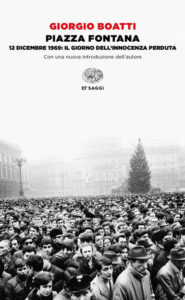 11 – Piazza Fontana : 12 dicembre 1969: il giorno dell’innocenza perduta / Giorgio Boatti ; con una nuova introduzione dell’autore. – Torino : Einaudi, 2019.
11 – Piazza Fontana : 12 dicembre 1969: il giorno dell’innocenza perduta / Giorgio Boatti ; con una nuova introduzione dell’autore. – Torino : Einaudi, 2019.
E’ un giorno tristemente noto, quel venerdì 12 dicembre 1969: a Milano, scoppia una bomba alla Banca Nazionale dell’Agricoltura: sedici morti, decine di feriti – una strage. E la fine di un sogno, quello nato nel ’68, di fronte alla prima di una serie di tragedie che per anni colpiranno l’Italia, mineranno la convivenza civile e metteranno a dura prova le istituzioni. Giorgio Boatti racconta tutto questo: non solo una strage, ma una guerra che nasce da quella strage, una guerra combattuta in tempo di pace, sotterranea, condotta allo scopo di bloccare ogni possibilità d’alternanza nella vita politica italiana.
 12 – Piazza Fontana : il primo atto dell’ultima guerra italiana / Gianni Barbacetto. – Milano : Garzanti, 2019.
12 – Piazza Fontana : il primo atto dell’ultima guerra italiana / Gianni Barbacetto. – Milano : Garzanti, 2019.
Il 12 dicembre 1969, una bomba scoppia all’interno della Banca Nazionale Dell’Agricoltura in piazza Fontana a Milano provocando 17 morti e 88 feriti. È la «madre di tutte le stragi», il prologo di una stagione di violenti attentati che insanguinerà l’Italia negli anni successivi, ma per Gianni Barbacetto rappresenta anche il primo atto di una strategia eversiva molto più ampia e ispirata a un sistematico disegno criminale. Quell’ordigno segna infatti l’inizio di una «guerra non ortodossa»: da una parte, un esercito occulto, senza divise e senza bandiere ma pronto a tutto, che riteneva di combattere contro il «mostro» comunista; dall’altra parte, cittadini inermi con l’unica colpa di trovarsi al momento sbagliato nel luogo sbagliato: una banca, un treno, una piazza, una stazione. Dopo gli anni dell’orrore e dell’indignazione, e dopo il fallimento quasi completo della via giudiziaria, quelle stragi sono state ridotte a occasione per meste cerimonie di commemorazione. Questo libro, frutto di una ricerca di decenni, dà voce in presa diretta ai magistrati che hanno indagato sull’eversione, getta nuova luce su eventi tra i più oscuri della nostra Repubblica, li collega tra loro e sottolinea come le vicende siano ormai chiare, le responsabilità accertate, il disegno e le connessioni svelati. E ribadisce che raccontare resta un dovere per non dimenticare.
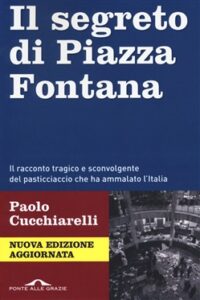 13 – Il segreto di Piazza Fontana : finalmente la verità sulla strage : le doppie bombe e le bombe nascoste, Valpreda, Pinelli, Calabresi, Feltrinelli, i servizi deviati e quelli paralleli, la DC, il PCI, la NATO e gli Stati Uniti : l’inchiesta choc che ha violato un tabù durato quarant’anni / Paolo Cucchiarelli. – Milano : Ponte alle Grazie, 2012.
13 – Il segreto di Piazza Fontana : finalmente la verità sulla strage : le doppie bombe e le bombe nascoste, Valpreda, Pinelli, Calabresi, Feltrinelli, i servizi deviati e quelli paralleli, la DC, il PCI, la NATO e gli Stati Uniti : l’inchiesta choc che ha violato un tabù durato quarant’anni / Paolo Cucchiarelli. – Milano : Ponte alle Grazie, 2012.
12 dicembre 1969, il nostro venerdì nero. In un Paese che dopo il fascismo e la guerra civile si credeva innocente, quattro esplosioni lacerano il pomeriggio invernale, una a Milano e tre a Roma. Per la più grave, alla Banca Nazionale Dell’Agricoltura di piazza Fontana a Milano, moriranno in diciassette. I feriti sono in tutto centocinque. Comincia la strategia della tensione, comincia la stagione dei sotterfugi e delle manipolazioni, della corruzione e dei soprusi: la stagione che dura ancora oggi. Leggete, leggete questo libro. La sua serietà, la sua passione per la verità – in un Paese in cui questi sono pregi rari – ha portato l’autore a indagare per dieci anni e a penetrare la cortina di acciaio di un segreto coltivato da tutte le parti politiche. Il segreto indicibile delle doppie bombe, piazzate dagli anarchici e raddoppiate dai fascisti; il segreto delle altre due bombe scomparse e dell’esplosivo utilizzato in quel giorno fatidico; quel che sapeva la DC, quel che sapeva il PCI, quel che sapevano gli USA e la NATO. Un segreto che non salva nessuno. E che spiega anche la tragica morte di Pinelli, Calabresi, Feltrinelli. Dopo troppe assoluzioni, dopo che con l’ultima sentenza i parenti delle vittime sono stati condannati a risarcire le spese processuali, il nostro pasticciaccio finalmente si sbroglia…
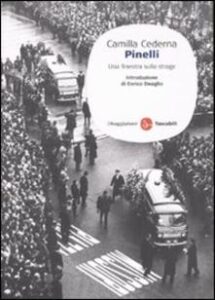 14 – Pinelli : una finestra sulla strage / Camilla Cederna. – Milano : Net, 2004.
14 – Pinelli : una finestra sulla strage / Camilla Cederna. – Milano : Net, 2004.
È il 15 dicembre 1969, a Milano è da poco passata la mezzanotte. Da tre giorni non si parla d’altro che dell’attentato alla Banca dell’Agricoltura, in piazza Fontana. Per Camilla Cederna è stata una lunga giornata, quella dei funerali in Duomo delle diciassette vittime della strage. Si è appena addormentata, quando all’improvviso squilla il telefono. Sono gli amici e colleghi giornalisti Corrado Stajano e Giampaolo Pansa: “Fatti trovare in strada tra cinque minuti, è successo qualcosa in questura”. Così inizia il libro che state per leggere. Un libro che Camilla Cederna scrisse dopo le sue indagini di quei giorni e destinato a suscitare scalpore ancora per molto tempo. All’origine, piazza Fontana: il luogo in cui un’intera generazione perse l’innocenza, in cui l’entusiasmo e la positività della contestazione si dileguarono di fronte alla strategia della tensione. Cercando i responsabili della bomba, la polizia ferma alcuni esponenti del movimento anarchico, tra cui Giuseppe Pinelli e Pietro Valpreda. Dopo tre giorni di interrogatori, Pinelli vola giù da una finestra della questura, in circostanze mai del tutto chiarite. Gli inquirenti e l’opinione pubblica, tutti gli italiani si dividono: è stato suicidio, incidente o forse qualcosa di peggio? Chi era presente in quella stanza al momento del fatto, con una finestra aperta in pieno dicembre?
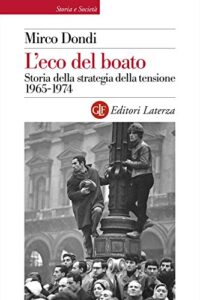 15 – L’eco del boato : storia della strategia della tensione, 1965-1974 / Mirco Dondi. – Roma ; Bari : Laterza, 2015.
15 – L’eco del boato : storia della strategia della tensione, 1965-1974 / Mirco Dondi. – Roma ; Bari : Laterza, 2015.
Le ‘stragi nere’ iniziano il 12 dicembre 1969 con Piazza Fontana e terminano il 4 agosto 1974 con l’attentato al treno Italicus. Alcuni giorni dopo la bomba di Milano, il settimanale britannico “The Observer” parlerà di ‘strategia della tensione’, riferendosi non solo alle bombe ma al modo in cui sono stati strumentalizzati attentati e disordini sociali, chiamando in causa la stampa e i politici. La stagione dello stragismo, ignota ai Paesi dell’Europa occidentale, ha minato le istituzioni democratiche e la convivenza sociale dell’Italia, con l’aggravante che in quarant’anni non sono stati condannati né i mandanti né gran parte degli esecutori. Solo in sede storica si è fatto un po’ di ordine. Mirco Dondi ricostruisce gli episodi stragisti, soffermandosi in particolare sul loro impatto immediato.
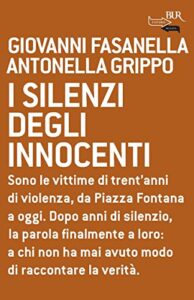 16 –Il silenzio degli innocenti / Giovanni Fasanella , Antonella Grippo. – Milano : Rizzoli, 2006.
16 –Il silenzio degli innocenti / Giovanni Fasanella , Antonella Grippo. – Milano : Rizzoli, 2006.
Quasi 600 morti e 5000 feriti. E in più il calvario dei loro familiari. È il costo umano di una guerra dichiarata non solo contro lo Stato. Questo libro dà voce a chi non l’ha mai avuta. Anzi, a coloro cui è stata, in mille modi, negata. Solo i carnefici sono stati chiamati a testimoniare su quei terribili anni. L’Italia, allora, rischia di essere l’unico paese al mondo dove paradossalmente la storia la si lascia scrivere dagli sconfitti, dagli ex terroristi. Avvicinando le vittime (scampati o sopravvissuti a stragi e ad attentati) e i loro familiari, mostrando loro interesse e facendoli parlare, si ascoltano racconti di delusioni, di solitudine e di disinteresse da parte delle istituzioni.
 17 – Pinelli : la diciassettesima vittima / Amedeo Bertolo … [et al.] ; prefazione di Luciano Lanza ; con un’intervista di Lorenzo Pezzica a Cesare Vurchio. – Pisa : BFS, 2006.
17 – Pinelli : la diciassettesima vittima / Amedeo Bertolo … [et al.] ; prefazione di Luciano Lanza ; con un’intervista di Lorenzo Pezzica a Cesare Vurchio. – Pisa : BFS, 2006.
Giuseppe Pinelli muore, nella notte tra il 15 e il 16 dicembre 1969, volando dalla finestra dell’ufficio del commissario Luigi Calabresi, situato al 4° piano della Questura di Milano. È uno tra i numerosi fermati, nel pomeriggio del 12, a seguito dell’attentato di piazza Fontana. Immediatamente le autorità indicano negli “estremisti di sinistra”, e tra questi gli anarchici, i “sicuri” esecutori della strage, mentre i veri colpevoli vengono ben nascosti dalle manipolazioni e deviazioni messe da subito in atto. Non a caso i movimenti di sinistra, con i libertari in testa e con l’aiuto di un piccolo nucleo di giornalisti democratici, lanciano ben presto una campagna di controinformazione che battezza quella di piazza Fontana come “strage di stato”. La magistratura, dopo anni di vane ricerche, con un artifizio giuridico sentenzia che la caduta è stata causata da un “malore attivo”. Da allora sulla vicenda cala il silenzio fino al momento del processo Sofri-Calabresi, ma mai si cercherà di fare chiarezza sulle responsabilità politiche e materiali della morte del ferroviere anarchico.
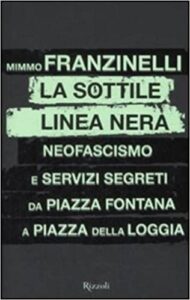 18 – La sottile linea nera : neofascismo e servizi segreti da Piazza Fontana a Piazza della Loggia / Mimmo Franzinelli. – Milano : Rizzoli, 2008.
18 – La sottile linea nera : neofascismo e servizi segreti da Piazza Fontana a Piazza della Loggia / Mimmo Franzinelli. – Milano : Rizzoli, 2008.
Milano, 12 dicembre 1969: nella sede della Banca Nazionale Dell’Agricoltura esplode una bomba che uccide 17 persone e ne ferisce 88. Brescia, 28 maggio 1974: durante una manifestazione antifascista in Piazza della Loggia lo scoppio di una bomba uccide otto persone e ne ferisce un centinaio. La strage è un tassello fondamentale della strategia della tensione, perché ebbe un preciso obiettivo politico (la città lombarda che, con Milano e Torino, era il laboratorio dell’unità sindacale) e perché fu uno degli episodi della svolta che avrebbe precipitato l’Italia negli anni bui del terrorismo. Franzinelli parte dalle inquietudini alla vigilia del Sessantotto per raccontare con un taglio originale – e documenti inediti o poco noti – l’eversione nera dell’Italia dei primi anni Settanta, i suoi protagonisti, i suoi drammi e i suoi scontri, di cui sono parte integrante i depistaggi e il duro lavoro investigativo che hanno segnato la vicenda giudiziaria fino a oggi.
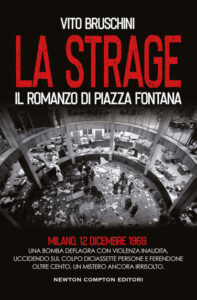 19 – La strage : il romanzo di piazza Fontana / Vito Bruschini. – Roma : Newton Compton, 2012.
19 – La strage : il romanzo di piazza Fontana / Vito Bruschini. – Roma : Newton Compton, 2012.
Milano, 12 dicembre 1969. Una bomba deflagra con violenza inaudita, uccidendo sul colpo dodici persone e ferendone quasi novanta. Un mistero ancora irrisolto. «Paradossalmente, la finzione diventa mezzo efficace per ricostruire in modo attendibile la realtà. Ed è il libro di Bruschini “La strage. Il romanzo di piazza Fontana” a fare un passo avanti. Grazie a elementi di fantasia innestati in un contesto ampiamente documentato, e soprattutto, alla libertà che la finzione consente, la strage del 12 dicembre e l’orrore di quei giorni e di quel tempo cruciale per il nostro Paese, emergono finalmente in modo nitido e convincente»
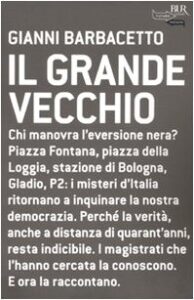 20 – Il Grande Vecchio : dodici giudici raccontano le loro inchieste sui grandi misteri d’Italia da piazza Fontana a Gladio / Gianni Barbacetto. – Baldini & Castoldi, stampa 1993.
20 – Il Grande Vecchio : dodici giudici raccontano le loro inchieste sui grandi misteri d’Italia da piazza Fontana a Gladio / Gianni Barbacetto. – Baldini & Castoldi, stampa 1993.
C’è una lunga stagione della storia italiana in cui forze sotterranee e occulte si sono di volta in volta incrociate, sommate o scontrate con le forze visibili della politica, dell’economia, della società in una guerra segreta tra l’Occidente e il blocco comunista. Una guerra a bassa intensità, non ortodossa, non convenzionale, che però ha provocato tantissime vittime e ha inquinato per sempre la vita della nostra Repubblica. Oggi questa guerra è finita, ma la verità resta indicibile. E i processi – piazza Fontana, piazza della Loggia, Italicus, Gladio, P2 – si chiudono e si riaprono, senza quasi mai poter accertare in via definitiva i colpevoli. Due generazioni di magistrati si sono spesi a cercare la verità. Sono sempre stati fermati poco prima di svelarla. Eppure, le loro inchieste e le loro sentenze hanno dimostrato che, senza l’intervento dei servizi e le coperture internazionali, non una delle stragi italiane sarebbe stata commessa e, se commessa, non sarebbe potuta rimanere impunita. E che solo guardandole tutte insieme se ne può capire il senso. Perché il Grande Vecchio altro non è che un sistema di poteri. Nel quadro della guerra fredda e della sovranità limitata dell’Italia, alla legalità ufficiale si è sostituita una “legalità” sotterranea con regole inconfessabili che, al di là degli obiettivi iniziali, è cresciuta a dismisura: l’eversione di Stato ha nutrito la corruzione politica e si è saldata con la criminalità organizzata
Fumetti:
 21 – Piazza Fontana / Francesco Barilli , Matteo Fenoglio. -: Becco Giallo, 2009
21 – Piazza Fontana / Francesco Barilli , Matteo Fenoglio. -: Becco Giallo, 2009
Milano, 12 dicembre 1969. La Banca Nazionale dell’Agricoltura, al civico 4 di Piazza Fontana, è affollata per le contrattazioni del mercato agricolo che per tradizione si tengono di venerdì. Alle 16.37, nella sala principale della banca, esplode una potentissima bomba al tritolo collocata in modo da provocare il massimo numero di vittime: piazzata sotto il tavolo che si trova al centro del salone riservato ai clienti, di fronte agli sportelli. Il bilancio delle vittime è devastante: 17 morti e 88 feriti. Nei giorni successivi alla strage, solo a Milano, vengono fermate e interrogate 84 persone tra anarchici, militanti di estrema sinistra, appartenenti a formazioni di destra. Il primo a essere convocato è il ferroviere anarchico Giuseppe Pinelli, chiamato in Questura poche ore dopo l’esplosione. A interrogarlo è il commissario Calabresi, che guida l’inchiesta sulla strage che segna l’inizio della strategia della tensione e apre il sipario sui dieci anni più controversi e bui della più recente storia italiana. Quella strage, quelle trame antidemocratiche, imposero alla democrazia italiana una prova da superare: saper guardare dentro a se stessa e guarire dal suo male o accettare di conviverci e farsene consumare. Quella prova la democrazia italiana non ha saputo superarla: c’è un debito di verità e giustizia da assolvere, ma la Repubblica non è mai riuscita a saldarlo”. (Dalla Prefazione di Aldo Giannuli)
 22 – Milano, 12 dicembre. Cani sciolti. – Milano : Sergio Bonelli editore, 2019.
22 – Milano, 12 dicembre. Cani sciolti. – Milano : Sergio Bonelli editore, 2019.
Autunno 1969, gli scioperi infiammano gli animi, le cariche, in piazza, si fanno più brutali. A Milano la tensione è palpabile e tutto sembra portare verso la tragedia… che puntuale arriva il 12 dicembre, giorno della strage di piazza Fontana. Una bomba esplode all’interno della filiale della Banca dell’Agricoltura. Dove sono e cosa fanno, in quel momento, i nostri Cani Sciolti? Un drammatico punto di svolta nella storia della città e dell’intero Paese. L’inizio di anni bui e di trame che ancora oggi non sono state del tutto spiegate e risolte. Mentre la vita, che va avanti nelle piccole e grandi cose della quotidianità, si ferma per dare l’addio alle vittime innocenti. In un volume di grande formato, cartonato e arricchito da una serie di contenuti extra, Gianfranco Manfredi, accompagnato ai disegni da Roberto Rinaldi, firma un nuovo capitolo della saga dei Cani Sciolti, dedicata agli anni più caldi della nostra storia recente, che va a mescolarsi alle vicende private dei protagonisti.
Filmografia:
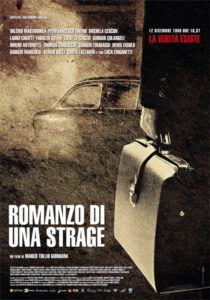 23 – Romanzo di una strage / un film di Marco Tullio Giordana ; [liberamente tratto dal libro di Paolo Cucchiarelli ; soggetto e sceneggiatura Marco Tullio Giordana, Sandro Petraglia, Stefano Rulli ; fotografia Roberto Forza ; musiche Franco Piersanti]. – [Roma] : Rai Cinema : 01 Distribution, ℗2012. – 1 DVD-Video (circa 124 min.)
23 – Romanzo di una strage / un film di Marco Tullio Giordana ; [liberamente tratto dal libro di Paolo Cucchiarelli ; soggetto e sceneggiatura Marco Tullio Giordana, Sandro Petraglia, Stefano Rulli ; fotografia Roberto Forza ; musiche Franco Piersanti]. – [Roma] : Rai Cinema : 01 Distribution, ℗2012. – 1 DVD-Video (circa 124 min.)
Il 12 dicembre 1969, alle ore 16,37 un’esplosione in piazza Fontana, nel pieno centro di Milano, devastò la sede della Banca Nazionale dell’Agricoltura, provocando 17 vittime e oltre una novantina di feriti. Si trattava del primo episodio di quella che si sarebbe chiamata in seguito “strategia della tensione”, l’inizio di uno dei periodi più turbolenti e luttuosi nella storia della Repubblica Italiana.
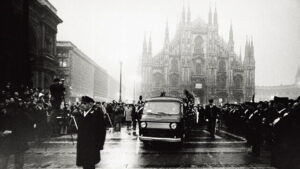
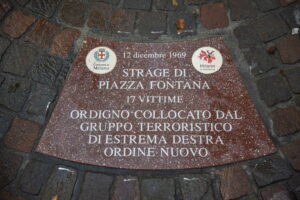
Sitografia
- Strage di piazza Fontana: Leggi la notizia
- Strategia della tensione in Italia: Leggi la notizia
- Giuseppe Pinelli: Leggi la notizia
- Franco Freda: Leggi la notizia
- Giovanni Ventura: Leggi la notizia
- Guido Giannettini: Leggi la notizia
- Servizio informazioni difesa (SID): Leggi la notizia
- Pietro Valpreda: Leggi la notizia
- Luigi Calabresi: Leggi la notizia
- Giangiacomo Feltrinelli: Leggi la notizia
- Convegno dell’hotel Parco dei Principi: Leggi la notizia
Videografia:
- La notizia nel telegiornale dell’epoca:
- Funerali vittime di Piazza Fontana, Milano (1969) Guarda il video
- Filmato inedito girato dopo la Strage di Piazza Fontana (1969) Guarda il video
- Cosa successe davvero in Piazza Fontana – Giovanni Fasanella Guarda il video
- Enrico Deaglio – La bomba: cinquant’anni di piazza Fontana Guarda il video
- Benedetta Tobagi “Piazza Fontana e l’Italia delle stragi” Modena 6/12/2019 Guarda il video
- Pinelli: una storia” Adriano Sofri: Guarda il video
- Tre ipotesi sulla morte dell’anarchico Pino Pinelli: Guarda il video
- La notte della Repubblica – La strage di Piazza Fontana: Guarda il video
- Book Focus della biblioteca comunale di San Gavino Monreale – La strage di Piazza Fontana: Guarda il video
“Io esclusi immediatamente la responsabilità degli anarchici per varie ragioni: prima di tutto, forse, per una specie di istinto, di intuizione, ma poi perché conosco gli anarchici. Gli anarchici non è che sono alieni dalla violenza, ma la usano in un altro modo: non sparano mai nel mucchio, non sparano mai nascondendo la mano. L’anarchico spara al bersaglio, in genere al bersaglio simbolico del potere, e di fronte. Assume sempre la responsabilità del suo gesto. Quindi, quell’infame attentato, evidentemente, non era di marca anarchica o anche se era di marca anarchica veniva da qualcuno che usurpava la qualifica di anarchico, ma che non apparteneva certamente alla vera categoria, che io ho conosciuto ben diversa e che credo sia ancora ben diversa”
Indro Montanelli
[da La notte della Repubblica, 12 dicembre 1989]
Articoli recenti
Archivi
- Luglio 2024
- Giugno 2024
- Maggio 2024
- Aprile 2024
- Marzo 2024
- Febbraio 2024
- Gennaio 2024
- Dicembre 2023
- Novembre 2023
- Ottobre 2023
- Settembre 2023
- Luglio 2023
- Giugno 2023
- Maggio 2023
- Aprile 2023
- Marzo 2023
- Febbraio 2023
- Gennaio 2023
- Dicembre 2022
- Novembre 2022
- Ottobre 2022
- Settembre 2022
- Agosto 2022
- Luglio 2022
- Giugno 2022
- Maggio 2022
- Aprile 2022
- Marzo 2022
- Febbraio 2022
- Gennaio 2022
- Dicembre 2021
- Novembre 2021
- Ottobre 2021
- Settembre 2021
- Agosto 2021
- Luglio 2021
- Giugno 2021
- Maggio 2021
- Aprile 2021
- Marzo 2021
- Febbraio 2021
- Gennaio 2021
- Dicembre 2020
- Novembre 2020
- Ottobre 2020
- Settembre 2020
- Agosto 2020
- Luglio 2020
- Giugno 2020
- Maggio 2020
- Aprile 2020
- Marzo 2020
- Febbraio 2020
- Gennaio 2020
Categorie
- Altri Post (305)
- News ed Eventi (10)
